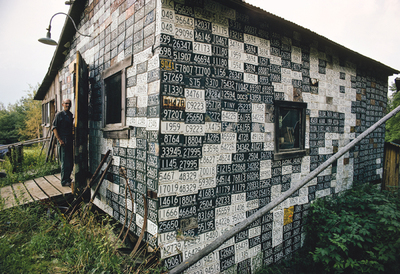Kodachrome Memory: American Pictures 1972–1990
Nathan Benn, Victory, 1973. © Nathan Benn. Exhibition is organized by art2art Circulating Exhibitions.
Deane Davis had just yielded the Vermont governorship to Thomas Salmon when National Geographic sent 23-year-old Nathan Benn to Vermont to take some pictures. A few years earlier, the state had instituted a sales tax and passed Act 250, a monumental law allowing development that still preserved the state’s environmental, cultural and aesthetic character. In the previous decade, the state’s last two towns became hooked-up to electricity, and its population grew a whopping 15 percent with a massive influx of hippies, back-to-landers and other counterculture types. In 1973, Vermont was about to change forever, and Nathan Benn was going to photograph it before it did.
National Geographic paired Benn’s photographs with text by legendary and often cantankerous Ethel Starbird. She was a University of Vermont graduate who had spent much of her youth and many of her summers in Vermont. “Strong opinions and hand labor characterize Vermonters, who must face the fact that outsiders own half the state,” she wrote. The 36-page photo spread and article appeared in the July 1974 issue of National Geographic. Benn filed away his transparencies and went on to photograph other places.
Benn stopped shooting in 1991, and it wasn’t until 2009 when Kodak announced it was ceasing production of his film of choice, Kodachrome, that he revisited his transparencies. He found a cache of ancient memories in pristine, glorious color. Sixty-seven of those photographs are on exhibit at the Shelburne Museum. More ethnographic than artistic, the exhibition shows that moment when Vermont stopped looking like Marion Post Wolcott’s Farm Security Administration photographs of the 1930s and started to look like it does today: a mishmash of refined sophistication and well-preserved reminiscence. One might expect a certain amount of nostalgic schmaltz with images of a town meeting in Burke Hollow, a brass band at Grafton’s Memorial Day Celebration and a farm wife standing outside the mudroom in her apron, but really, the photographs feel as fresh as the day they were taken: simple, honest, sincere snapshots like a memory that has returned.

